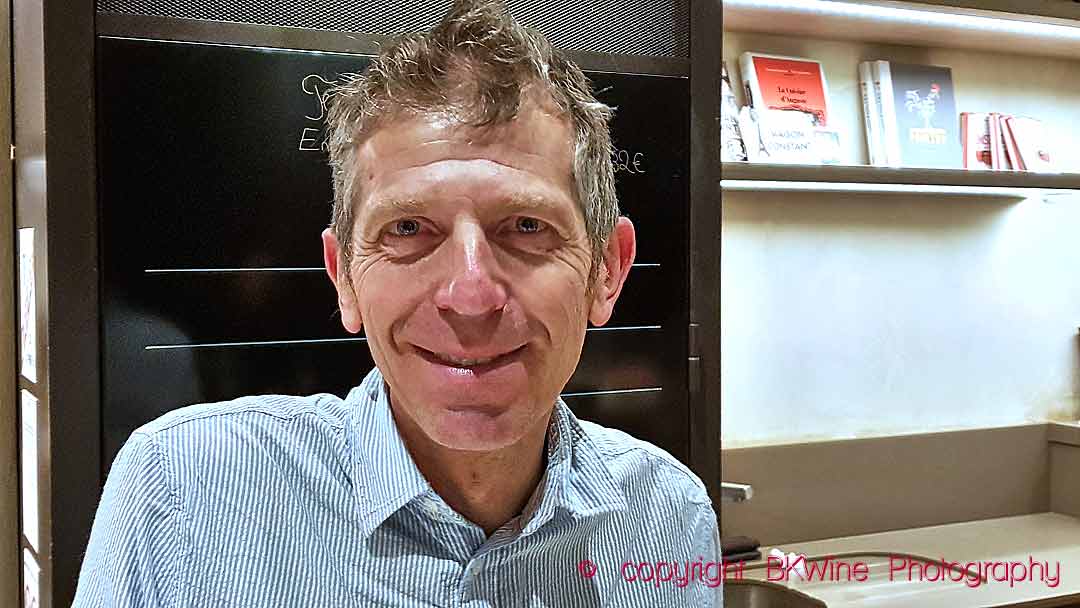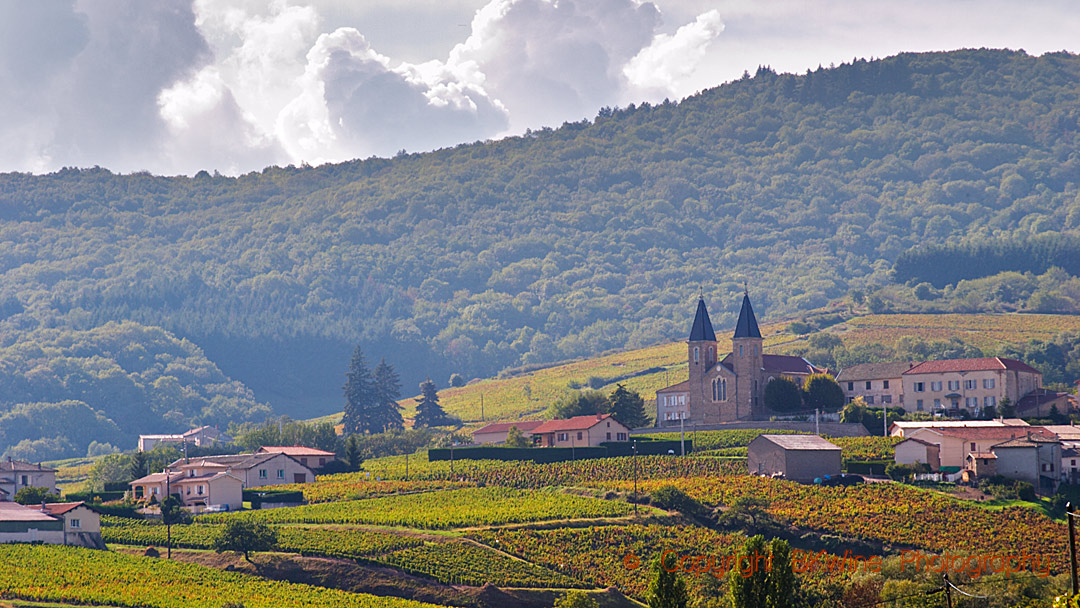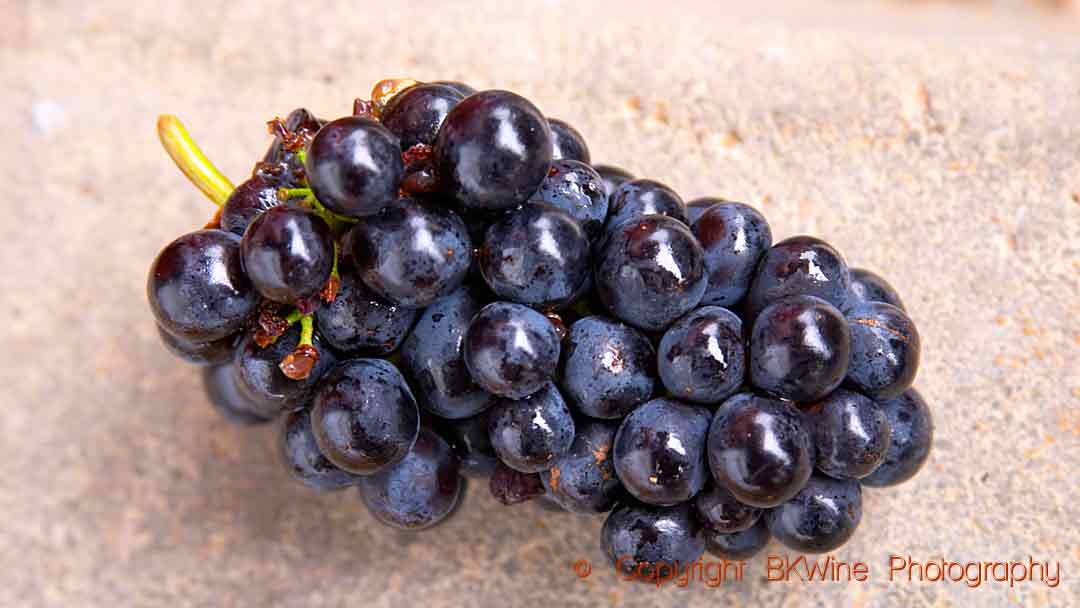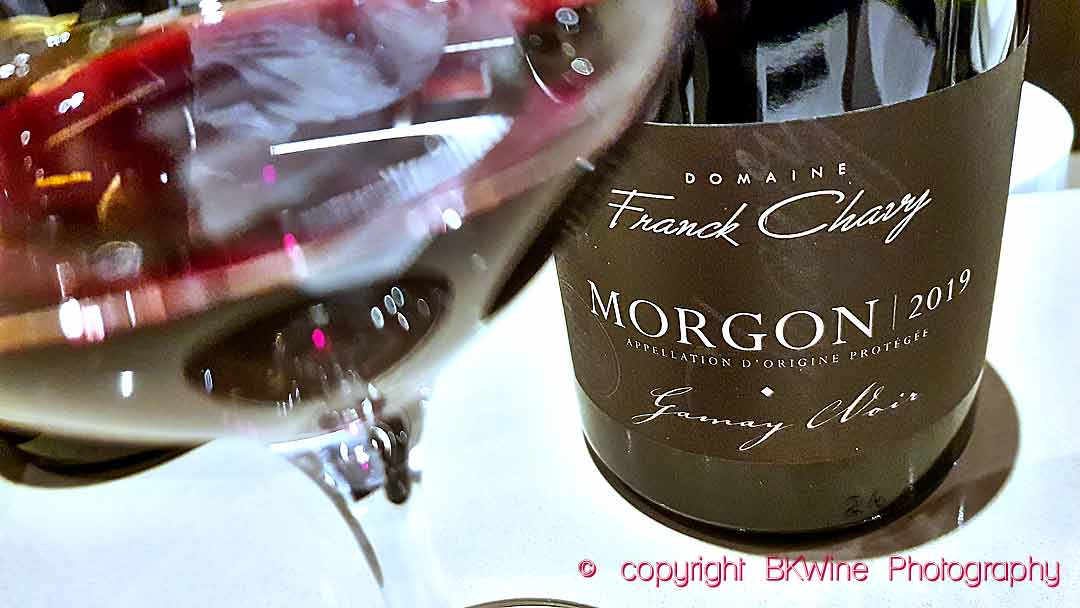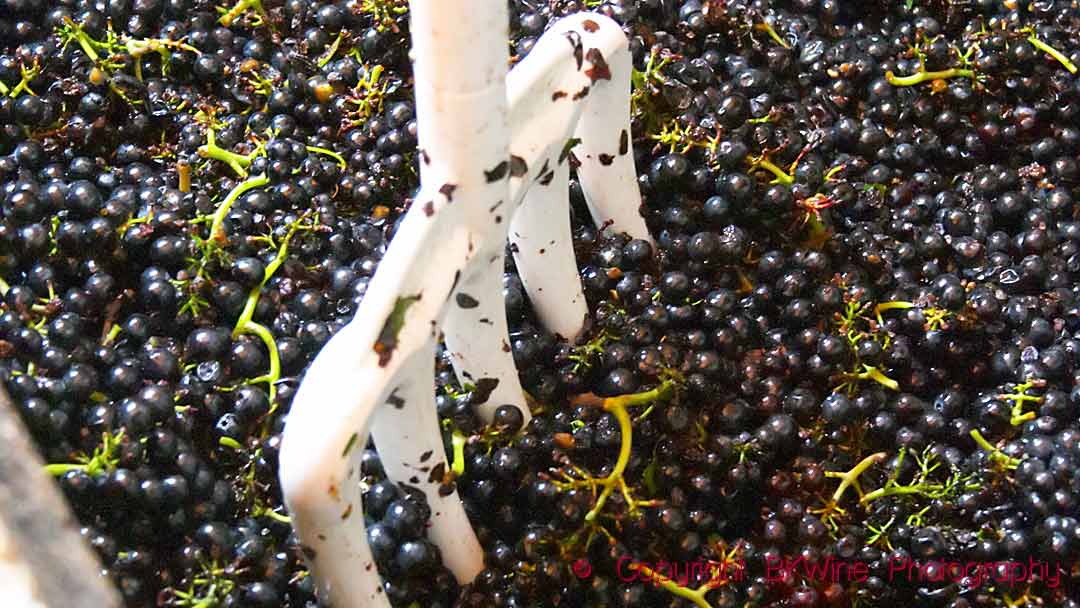Beaujolais wine is much more varied in style than one often thinks. It can be light and refreshing, but it can also be complex and subtle. It can be made with carbonic maceration but it can even be oak aged. A recent tasting with an extensive range of wines from Franck Chavy in Morgon illustrates it beautifully. Britt met with Franck and tasted his wines, the classic thirst-quenching style but also oak-aged and with no added sulphur.
Beaujolais is, in some ways, a misunderstood wine region. The successful Beaujolais Nouveau wines have shown us a fruity, easy-drinking style of Beaujolais. A delicious style. But at the same time, these wines have given the region a slightly frivolous reputation. This is how I see the Beaujolais wines:
- The succulent, fruity style of Beaujolais is unique and precisely what you yearn for now and then.
- Beaujolais is actually quite varied in terms of wine styles.
Point number 2 was confirmed when I recently tasted the wines of Domaine Franck Chavy, producer in the village of Villié-Morgon.
This is a longer version of an article published on Forbes.com.
Franck is a fourth-generation winegrower with vineyards in the villages (also called cru*) of Morgon, Regnié and Brouilly. He has been lucky enough to inherit some really old vineyards. The oldest were planted between 1900 and 1910. He has 10 hectares of vines.
Franck’s vineyards are on the slopes of the northern part of Beaujolais. Here, gamay thrives in the poor granite soil. The wines have structure without losing their generous fruit. “The soil is poor,” says Franck, “with very little organic matter which gives powerful wines with good acidity.”
The fresh and fruity character we associate with Beaujolais comes from the gamay grape and a fermentation method called carbonic maceration (macération carbonique). This technique means putting whole grape bunches in the tank to ferment, giving the wine particularly fruity flavours. Franck uses it only for his Beaujolais Nouveau.
Instead, he ferments his wines with destemmed grapes. He prefers an extended maceration with the skins, often 20 days. In the case of carbonic maceration, skin contact is no longer than 6 to 10 days. “Long maceration”, Franck says, “gives the wine tannins, roundness and more complex aromas from the terroir.”
Harvesting late to optimize phenolic ripening also helps him obtain all the good things from the grape skins.
Oak ageing and wines with no added sulphur
Franck uses steel tanks for fermentation and ageing for most of his wines, but he also uses oak barrels, which is unusual in Beaujolais for red wines. The general perception is that gamay is all about the fruit, and no oak should mask it. Some Beaujolais wines, though, have enough tannin structure to cope with oak. If you feel it improves the wine or not is a different matter. It is a question of your personal taste more than anything else. Franck himself says that opinions about his oak-aged cuvée are divided, “you like it, or you don’t”.
He has had a lot of success with his oak aged Morgon Gamay Noir, though, and vintage 2017 was chosen as the world’s best Gamay in 2019.
Franck makes a series of wines without added sulphur dioxide during vinification or bottling. Wine without added sulphur has a tradition in Beaujolais. The region is often considered the cradle of the French natural wine movement. However, no added sulphur doesn’t automatically put a wine in the “natural wine” category. (Read more about what natural wine is in this article.)
Franck is not claiming that wines without added sulphur are better, but, he says, they will be different, and, provided they are made with precision and control, they gain in freshness and complexity. He started with small quantities, and it is still only 5,000–10,000 bottles a year, but it is growing.
White Beaujolais
Beaujolais is most of the time a red wine, but a small part of the production is white, made from chardonnay, the Burgundy grape. Franck has half a hectare. Chardonnay on granite is unusual and, as Franck points out, gives lower yield than on clay-limestone soil, which is predominant further north in Burgundy.
He ferments and keeps his chardonnay some months in oak barrels. White Beaujolais without oak is too neutral in his opinion. But you shouldn’t overdo it, he adds. “The wine mustn’t be crushed by the oak.”
“You have to work the chardonnay to have a good body in the wine”, he says. He stirs the lees (batonnage) regularly during the ageing; this will stabilize the wine and increase the mouthfeel.
The wines from Domaine Franck Chavy
The prices quoted below are consumer prices from the Franck Chavy’s web shop.
Chardonnay 2018, Granites d’Or, Beaujolais Blanc Village, Domaine Franck Chavy
Lovely freshness and aromas of citrus and ripe peaches. Full-bodied and balanced with the oak in the background, giving some added complexity. (12.90 euro)
Brouilly, Cuvée Julmary 2019, Domaine Franck Chavy
This is a superb combination of the easy-drinking, fruity style and the more structured one. It is expressive, easy to enjoy and very pleasant. (11.50 euro)
Les Granites Roses 2019, Morgon, Domaine Franck Chavy
Here, the underlying iron-rich granite has gradually broken down and given the pink sand that we see in the topsoil. We have here a very generous and refreshing fruit with a slight and invigorating bitterness at the end. It is quite round on the palate, concentrated and structured. (12.20 euro)
Gamay 2019, Morgon, Domaine Franck Chavy
This is the wine that Franck ages for 12 months in 228-litre barrels.
I feel some vanilla notes and roasted coffee from the oak, but the fruit, dominated by ripe, dark berries, is also present. It has a good mouthfeel and is quite soft but structured. I like the wine, although I prefer Beaujolais without oak. (18.50 euro) (pictured above)
The wines with no added sulphur dioxide
When grapes ferment, sulphur (sulphites) is released as a normal part of the fermentation. This means that virtually all wines contain some sulphur. In normal winemaking some additional sulphur is often added as a preservative, to make sure the wine does not go bad. But more and more winemakers experiment with “no added sulphur”. But since most wines still contain sulphur, the “contains sulphites” mention on the labels is still used.
Régnié sans sulfites ajouté 2020, Domaine Franck Chavy
Lots of red, ripe fruit, expressive, feels undoubtedly like a gamay with its lively acidity. Lingering aftertaste. (12.30 euro)
Brouilly sans sulfite ajouté 2020, Domaine Franck Chavy
Dense, concentrated aroma, red berries, spices. Great mouthfeel with tannin structure. (13.80 euro)
Morgon sans sulfite ajouté 2020, Domaine Franck Chavy
Fruit intensity on the nose. Dark berries, rather than red. Full-bodied, a bit closed, but it opens up nicely on the palate. Lovely, refreshingly fruity. (15.50 euro/)
Régnié sans sulfite ajouté 2019, Domaine Franck Chavy
Fresh and pleasant aroma of red berries; cherries come to mind. Good structure, body and length. Very much a Beaujolais in style.
Régnié sans sulfite ajouté 2018, Domaine Franck Chavy
High and fresh acidity, ripe red berries, quite intense, complex and nuanced.
Régnié sans sulfite ajouté 2017, Domaine Franck Chavy
Aromatic, floral, light and rounded in style. Superb wine, complex and very drinkable.
In summary, a collection of enjoyable and exciting Beaujolais wines that well shows the charm and the complexity of the region. A tasting like this entices you to drink Beaujolais more often. All the more as the prices are very reasonable. Have Beaujolais in mind the next time you go wine shopping.
*The ten cru villages in Beaujolais are Morgon, Moulin-à-Vent, Régnié , Fleurie, Chiroubles, Saint-Amour, Brouilly, Côte de Brouilly, Juliénas, Chénas.


